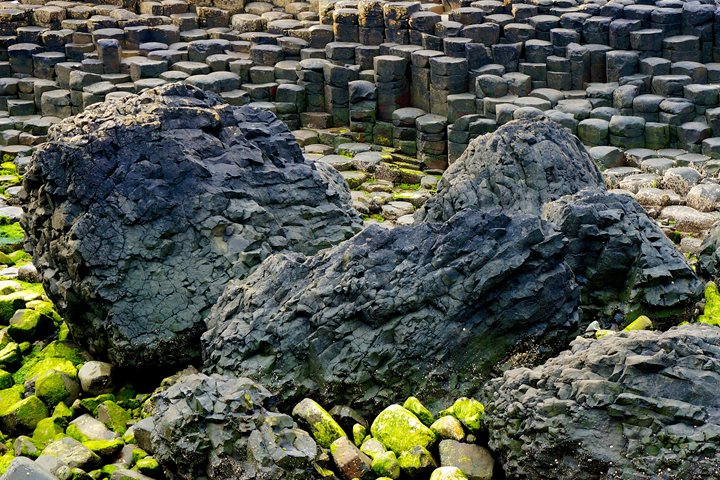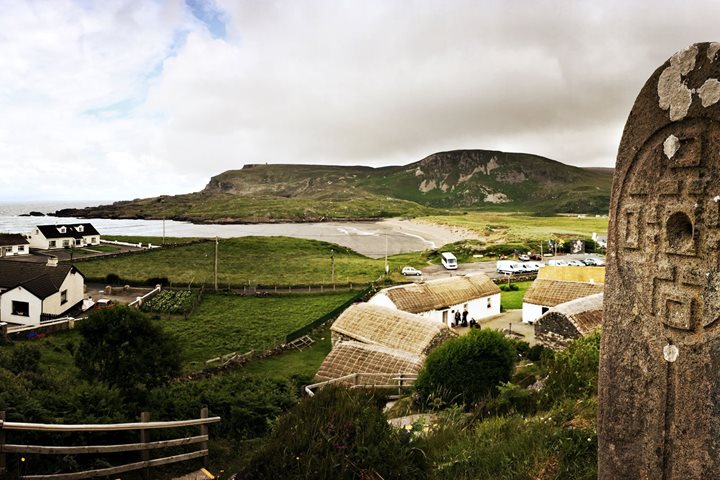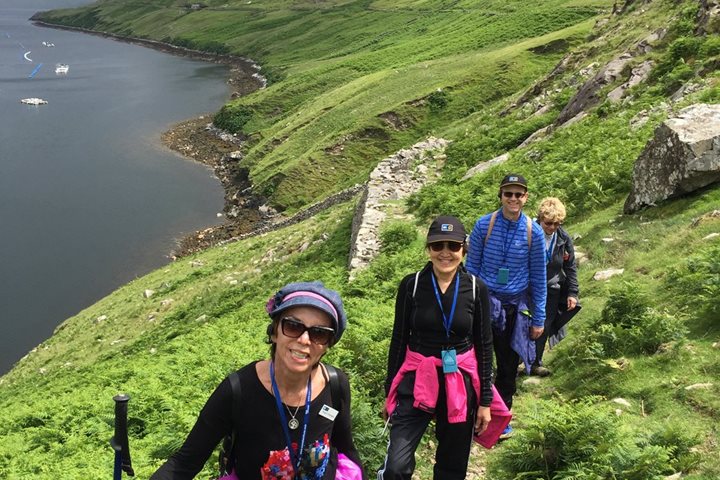Ireland exists on the edge, it creates edges and inhabits them, it was born from edges and it remains defined by them. A small island on the western extreme of Europe, for many centuries it has represented the farthest shore, the end of the earth in the imaginations of European people. Mesolithic peoples settled Ireland as early as 10,500 BC, at the end, the edge, of their long migration to the north and west. Much later the Celts or Celtic culture arrived, following the same paths of expansion and diffusion and finally pushed out to the margins of the continent by the Germanic tribes. By the sixth Century an eremitical monastic community took root as Christians from the mid-east sought the most distant and isolated sites for their aesthetic withdrawal from society. Ireland has always been the last place, the shore of the great ocean, the edge of the world.
Hundreds of millions of years ago, the earliest rocks that would later become Ireland also inhabited an edge, on the shore of a long vanished micro-continent named Avalonia after the mythical island where King Arthur’s sword Excalibur was forged. Around 420 million years ago Avalonia collided with Laurentia and became a part of that larger continent. The region of Ireland was then covered by a shallow sea where thick layers of sediments accumulated, eventually compacting into the mudstones and limestones that make up much of the surface geology of the island today.
Even the beautiful landscapes and the friendly (and wonderfully idiosyncratic) people of Ireland seem to float on the edge of a dream, particularly in the west. Ireland is at least as modern and forward-thinking as any developed nation, yet an indefinable world of mist and magic, standing stones and famine villages, fairies and selkies, still hovers just beyond the edges of the green hills and the surf that crashes at the foot of the sea cliffs.
Today we explored more of the lovely edges of Ireland. In the morning we set out early for a landing on Inishmore, in the Aran Islands. Driving and hiking across the bare limestone landscape, laced with walls built from the stones that once choked the small fields, we visited a magnificent iron age fortress or ceremonial center that perches on the very edge of the western cliff, high above the Atlantic waves. Close by some of us chose to stroll through the grounds of an sixth Century abbey where a carved tombstone still marks the graves of seven scholars who came from Rome to study in the famous schools at the edge of civilization.
During lunch National Geographic Orion moved on to the coast of Galway where we spent much of the afternoon cruising below the famous cliffs of Moher. This seven-hundred-foot high vertical escarpment has been carved into the 300-million-year-old mudstones by the ceaseless swells of the ocean through the 70 million years since the North Atlantic opened and created a new edge of a new continent that we now call Europe. In the lowest parts of the cliff we could see an interruption in the layers of the sedimentary rock where ancient rivers once flowed to the shore of a long lost sea called Iapetus, the father of Atlas.
Moving from ship to shore through our circumnavigation of the Emerald Isle, we are weaving a pattern of connection along the physical edge of Ireland. And as we explore this slow stitched path we are discovering many other edges, historic and mythical, emotional and rational, that all meet in this beautiful place.







